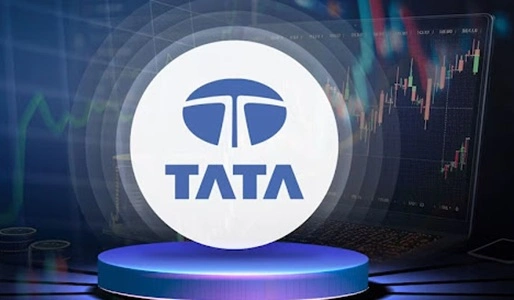The Tata Group, founded in 1868, has grown into India’s—and one of the world’s—largest conglomerates, with over ₹10 lakh crore (~US$120 billion) in annual revenues and a presence across 100+ countries, employing more than 900,000 people. Its portfolio spans industries including automotive (Tata Motors), steel (Tata Steel), IT (TCS), hospitality (IHCL), telecoms (Tata Communications), consumer goods, financial services, and more.
Recent Q1 FY26 highlights show mixed outcomes across key businesses:
- Indian Hotels Company Limited (IHCL) reported a 32% YoY revenue surge to ₹2,102 crore and 19% profit growth to ₹296 crore—marking its 13th consecutive record quarter.
- Tata Communications saw 7% revenue growth but a 43% PAT decline to ₹190 crore.
- Tata Technologies posted a 5% rise in net profit to ₹170 crore, with revenue falling just 1.9%, helped by key deals.
- Jaguar Land Rover (JLR), under Tata Motors, saw Q2 retail sales down 15%, with plans to reduce 500 UK management jobs amid profit compression.
These variations reflect the breadth of Tata’s domain reach—each segment is in a distinct business cycle, underscoring the need for a holistic strategic analysis.

Strengths
1. Diversified Conglomerate Structure: Tata’s presence across over 10 sectors—including fast-growing areas like IT, electric mobility, and consumer goods—mitigates risk exposure to any single industry .
2. Strong Brand Equity & Distribution Infrastructure: Legacy brands like TCS, Tata Steel, Tata Motors, Taj, and Voltas enjoy deep equity. Tata’s extensive dealer, service, and pan-India distribution network gives it unparalleled reach.
3. Stable Financial Performance & Balance Sheet Capacity: With group revenues exceeding ₹10 lakh crore, sizeable free cash flows, and reasonable debt at flagship companies, Tata can strategically invest in innovation, M&A, and capital expenditure .
4. Innovation & R&D Focus: Tata Motors’ and Tata Steel’s R&D investments show rising technological leadership. Also, Tata Semiconductor Assembly and Test (TSAT) reflects ambition in high-tech manufacturing.
5. Operational Resilience in Core Sectors: IHCL reports consistent growth; JLR recently hit decade‑high profits; TCS continues to drive cashflow; Tata Steel surged profits 113% in Q4 FY25—demonstrating strength in turnaround and cyclical recovery.
Weaknesses
1. Earnings Volatility Across Segments: Weakness in telecom (Tata Communications saw PAT down 43%) and autos (JLR sales down 15% YoY) demonstrates cyclical risk across subsidiaries .
2. High Complexity & Integration Risks: Managing 35-plus listed companies and 100+ entities across industries in 100+ countries adds considerable complexity, limiting organizational flexibility .
3. Exposure to Global Economic & Trade Headwinds: Safety nets like JLR and Tata Steel depend on global markets. Tariffs, US/EU trade risks, commodity shifts, and currency fluctuations directly impact margins and profitability.
4. Inconsistent Tech-to-Market Speed: While Tata has deep R&D, translating innovation into scalable consumer offerings (e.g., Tata Motors EVs, TSAT chips) remains a work in progress.
Opportunities
1. Tech & Digital Infrastructure Growth: Tata Group is fast-tracking investments in chip-making (TSAT), electric vehicles, energy transition, and 5G/AI (via Coupler ventures). These sectors promise high long-term returns.
2. Hospitality & Consumer Playbook: IHCL’s diversified model (Taj, Ginger, Qmin) suggests scalability in hospitality. Growing middle-class trends offer opportunity in Tata Consumer Products (₹17,618 crore revenue, 6% net profit growth FY25).
3. Global & Export Expansion: Tata Motors (JLR stock performance), Tata Steel’s global capacity, and TCS’s $7B revenue position the Group well against globalization, especially in emerging economies.
4. Green Finance & ESG Alignment: Increased green bond issuance, fintech tie-ups, sustainable steel, EV finance, and renewable energy presence match global ESG flows and policy incentives.
5. Consolidation & Portfolio Optimization: Further integration (e.g., merging airline assets), divestments, and operational efficiency can unlock synergies and improve margins.
Threats
1. Macroeconomic & Geopolitical Headwinds: Global slowdowns, US/EU trade policies, and India’s domestic slowdown can hurt consumer-facing and export-oriented Tata businesses.
2. Competitive Landscape & Disruption Risk: Competition from agile fintech, neo auto startups, digital hospitality disruptors, and international rivals erodes margins and demands rapid innovation.
3. Regulatory & Environmental Compliance: Tata Steel’s carbon footprint, JLR’s emission targets, TSAT’s semiconductor compliance, and Airbnb-style competition in hospitality all face toughening regulations.
4. Technological & Talent Challenges: Competing in tech-intensive segments (AI, chip-making, EVs) requires specialized talent and fast learning—shortage of which may slow transformation.
Future Outlook
Tech-Led Growth Acceleration: Expect continued expansion into semiconductors (TSAT), AI-driven mobility, digital infrastructure (Tata Communications finalized 5G deals), boosting future revenues and higher-margin revenue share.
Clean Tech & ESG Momentum: Rising green finance, EV investments, renewable projects, and carbon reduction in steel align Tata with global sustainability mandates and long-term capital flows.
Global Consolidation & Export Scaling: Tata Motors, Steel, and JLR are positioned to benefit from geographic diversification and export-led opportunities—particularly as emerging markets seek alternatives.
Digital Services & Consumer Horizontal Integration: TCS, Tata Digital, IHCL, and consumer businesses (Tata Consumer Products) will increasingly cross-leverage digital platforms, loyalty, fintech, and retail ecosystems.
Capital Allocation via Focused M&A / Re-investment: Tata will continue deploying capital into high-growth areas, leveraging its strong balance sheet to scale core strategic plays while pruning legacy segments.
Governance & Portfolio Optimization: Simplification via divestments (like Jaguar Land Rover UK management cuts) and consolidation (e.g., Vistara-Air India merger) will sharpen structure and value realization.
In summary, the Tata Group is moving from foundational strength toward a high-growth, tech-led, sustainable future. Execution on semiconductor ambitions, EV and green energy investments, hospitality scale-up, and strong capital discipline will determine whether Tata’s century-long legacy will fuel its next phase as a future-ready global conglomerate.